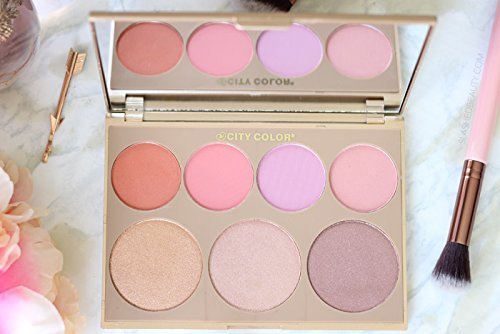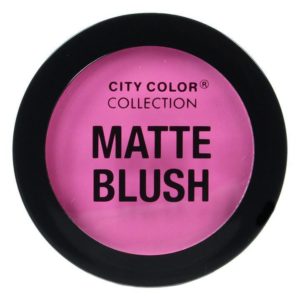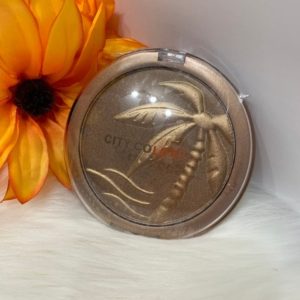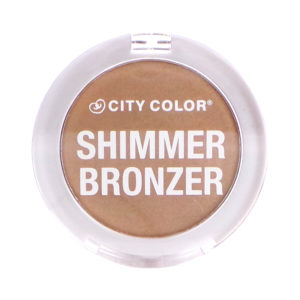FDA Finds Asbestos in Beauty Plus Products
The Food and Drug Administration has issued a safety alert urging consumers to stop using cosmetics from Beauty Plus Global, after the agency found the deadly carcinogen asbestos in at least four different talc-based products.

Beauty Plus Global’s City Colors Timeless Beauty Palette, SKU #849136012958, Lot No. 1510068/PD-C864R was found to contain asbestos. (Photo: City Colors)
On Sept. 6, Beauty Plus Global voluntarily recalled four cosmetic products that tested positive for asbestos during the FDA’s ongoing testing of cosmetics for asbestos. The recalled products, under the City Color brand, include:
- Beauty Plus Global Inc. City Color Collection Matte Blush (Fuchsia), SKU #849136008807, Lot No. 1605020/PD-840
- Beauty Plus Global Inc. City Color Cosmetics Timeless Beauty Palette, SKU #849136012958, Lot No. 1510068/PD-C864R
- Beauty Plus Global Inc. City Color Bronzer (Sunset), SKU #849136016017, Lot No. 160634/PD-P712M
- Beauty Plus Global Inc. Beauty Plus Global Inc. City Color Shimmer Bronzer (Caramel), SKU #849136017106, Lot No. 1612112/PD-840

City Color’s matte blush (fuchsia), SKU #849136008807, Lot No. 1605020/PD-840 has been recalled. (Photo: City Colors)
The FDA is advising consumers not to use any of the products.
Asbestos was found in the products – bronzer, shimmer bronzer, a beauty palette and a matte blush — as part of the FDA’s ongoing testing of beauty products. This is the second time Beauty Plus has been the subject of a voluntary recall due to asbestos.
In May, the FDA warned consumers not to use two products: Claire’s JoJo Siwa Makeup Set and Beauty Plus Global Effects Palette 2, both made with talc.
“It is troubling to think how many people have used talc-based cosmetics products potentially contaminated with asbestos, when inhaling even the smallest amount can cause cancer later in life,” said Scott Faber, the Environmental Working Group’s senior vice president for government affairs, in a statement. “While consumers should be both alarmed and outraged, it’s hardly a surprise, considering the federal law regulating the cosmetics industry has not been updated since 1938.”

City Color bronzer (sunset), SKU #849136016017, Lot No. 160634/PD-P712M should not be used. (Photo: City Color)
“We urge consumers to heed the FDA’s alert and avoid these products, and we hope members of Congress will finally recognize the current system, which has allowed the cosmetics industry to operate beyond the reach of FDA’s authority, must end,” Faber added.
Geologically, talc and asbestos can be formed from the same parent rock. In many regions, talc deposits are contaminated with asbestos fibers. There is no safe level of exposure to any type of asbestos fiber, which can lodge deep in the lungs and cause mesothelioma or other fatal diseases decades after exposure.
A bipartisan group of House and Senate leaders are pushing sweeping cosmetics reform legislation that could fix the problem.
Rep. Debbie Dingell (D-Mich.) has introduced legislation that would require warning labels on cosmetics that could contain asbestos and are marketed to children.
In March, the House held an oversight hearing looking into asbestos-contaminated cosmetics following earlier FDA tests that found asbestos in three talc-based cosmetics products sold by Claire’s. Faber testified before the committee, warning that there are thousands of talc-based personal care products that could be contaminated with asbestos.

City Color shimmer bronzer (caramel), SKU #849136017106, Lot No. 1612112/PD-840 contains asbestos. (Photo: City Color)
“EWG has found more than 2,000 cosmetics and other personal care products that contain talc, including more than 1,000 loose powders or pressed powders that pose a risk of being inhaled,” Faber said. “Even small amounts of asbestos in talc can cause mesothelioma and other deadly diseases, many years after exposure.”
Asbestos is one of the most dangerous substances on Earth. From federal mortality data, the EWG Action Fund estimated that up to 15,000 Americans die each year from asbestos-triggered diseases, including mesothelioma and asbestosis. Last year, an international peer-reviewed study found the annual death toll from asbestos exposure may be much higher – nearly 40,000 Americans a year, and more than 255,000 a year worldwide.
No law prohibits the presence of asbestos in cosmetics. Asbestos has been banned by more than 50 nations, but its use remains legal in the U.S. The Food and Drug Administration encourages companies to carefully select talc mines to avoid asbestos contamination, but it does not have the power to regulate products that contain talc.



